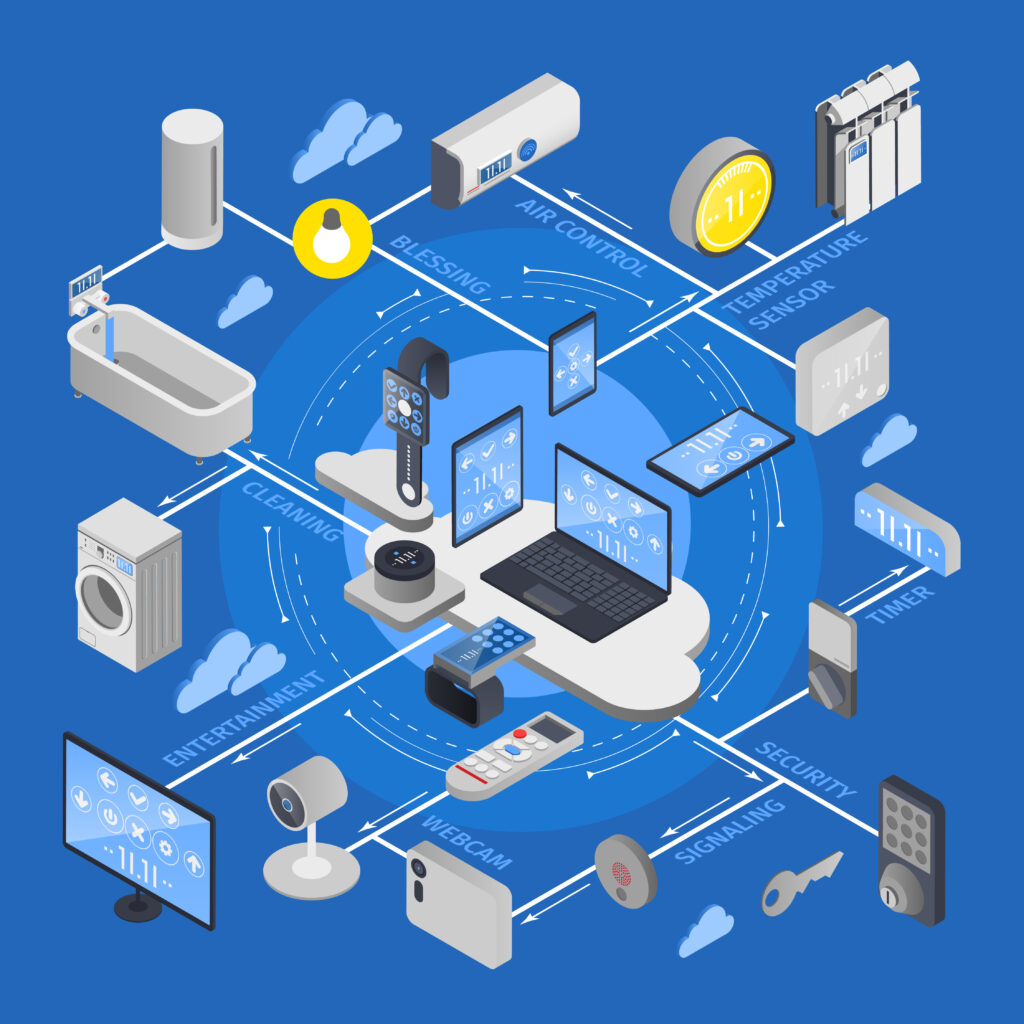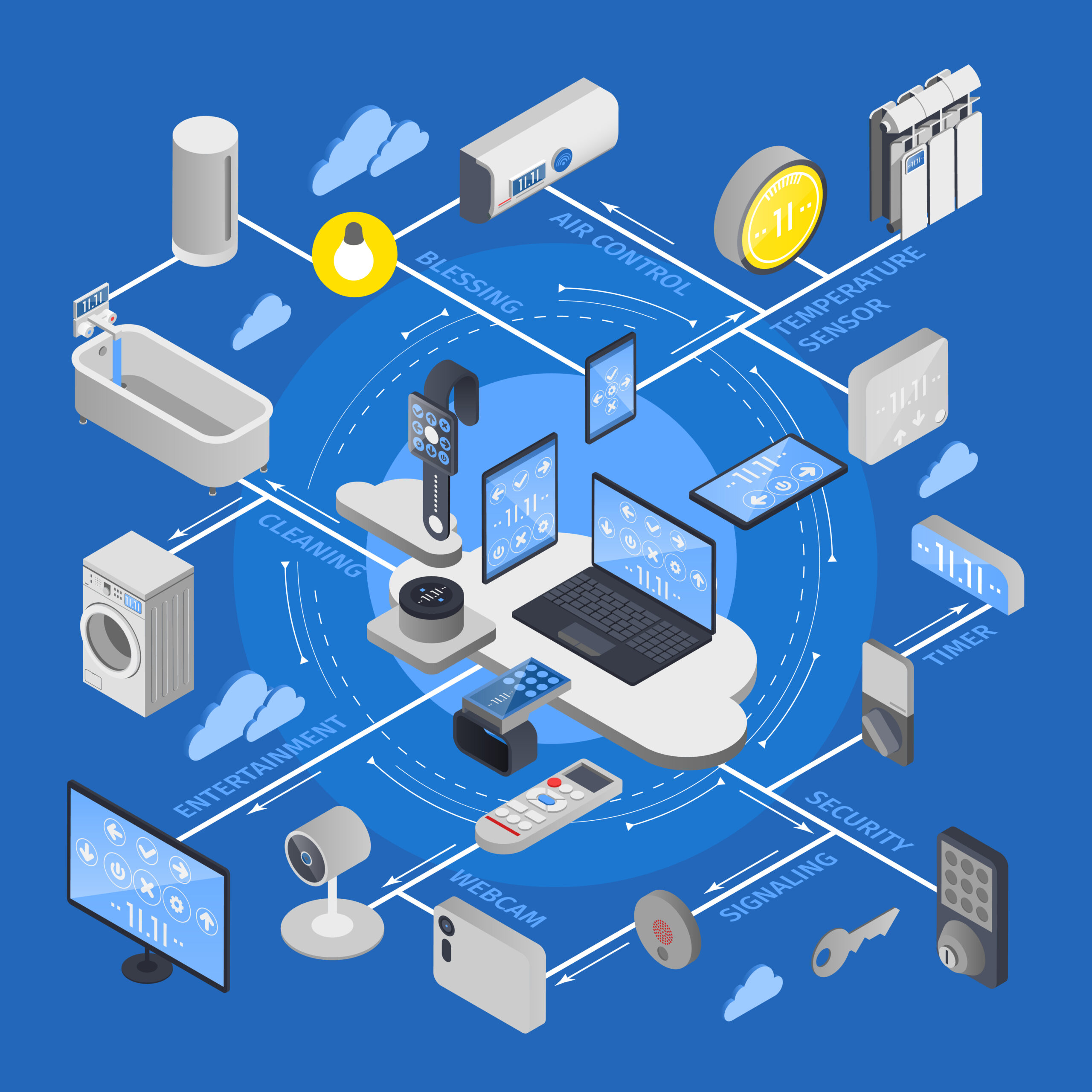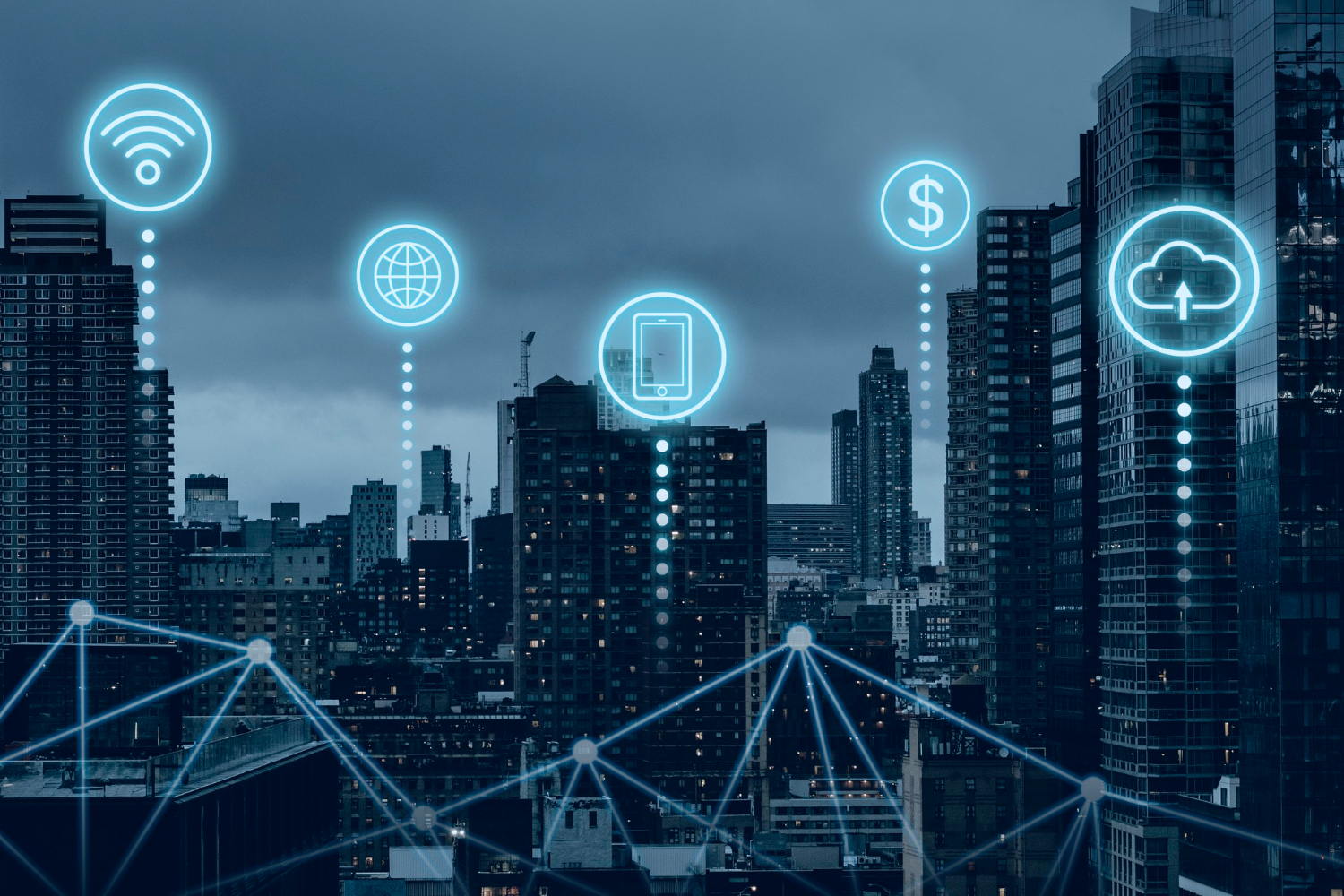The Internet of Things (IoT) is reshaping our world, seamlessly connecting devices and enabling unprecedented levels of automation and data exchange. From smart homes and healthcare to industrial automation and agriculture, IoT devices are becoming integral to various sectors, enhancing efficiency, convenience, and functionality. This blog post explores the different types of IoT devices and their wide-ranging applications.
If you are wondering what is an iot device, you can check another article that talks more in depth what are these devices and how are they used.

Understanding IoT Devices
IoT devices are physical objects embedded with sensors, software, and other technologies to connect and exchange data with other devices and systems over the internet. These devices collect data from their surroundings, transmit it to other devices or cloud platforms, and sometimes take actions based on the data received. The core components of IoT devices include sensors, connectivity modules, data processors, user interfaces, and power sources.
Types of IoT Devices
1. Consumer IoT Devices
Consumer IoT devices are designed for personal and home use, enhancing convenience, security, and entertainment. These devices are transforming our living spaces into smart homes.
Smart Home Devices
- Smart Thermostats: These devices, like the Nest Thermostat, allow homeowners to control their heating and cooling systems remotely. They learn user preferences and adjust settings automatically to optimize comfort and energy efficiency.
- Smart Lighting: Products like Philips Hue enable users to control lighting remotely, set schedules, and adjust brightness and color. They can be integrated with voice assistants like Alexa or Google Assistant for hands-free control.
- Smart Security Systems: Devices such as Ring doorbells and Arlo cameras provide real-time video surveillance, motion detection, and remote access. Smart locks, like those from August, allow users to lock and unlock doors remotely.
- Smart Appliances: Refrigerators, washing machines, and ovens with IoT capabilities, like those from Samsung and LG, offer remote monitoring and control, notifications, and integration with other smart home systems.
2. Industrial IoT Devices (IIoT)
Industrial IoT devices focus on improving efficiency, productivity, and safety in manufacturing and other industrial settings. These devices are critical in the transition to Industry 4.0.
Predictive Maintenance Systems
- Sensors for Machinery: Sensors monitor equipment for signs of wear and tear, such as vibration, temperature, and noise. By analyzing this data, systems can predict when maintenance is needed, reducing downtime and extending machinery life.
Asset Tracking
- GPS and RFID Tags: These devices track the location and status of assets in real-time, improving inventory management, logistics, and supply chain visibility.
Environmental Monitoring
- Air Quality Sensors: Devices like those from Honeywell monitor industrial environments for hazardous gases and particles, ensuring compliance with safety regulations and protecting worker health.
3. Healthcare IoT Devices
Healthcare IoT devices are transforming patient care, diagnostics, and medical research. They enable remote monitoring, personalized treatment, and efficient healthcare delivery.
Wearable Health Devices
- Fitness Trackers and Smartwatches: Devices like Fitbit and Apple Watch monitor vital signs such as heart rate, activity levels, sleep patterns, and more. They provide users and healthcare providers with real-time health data.
Remote Patient Monitoring
- Connected Health Devices: Devices such as blood pressure monitors, glucose meters, and ECG monitors can transmit data to healthcare providers, allowing for continuous monitoring and timely intervention.
Smart Medical Equipment
- Connected Inhalers and Insulin Pumps: These devices, like those from Propeller Health and Medtronic, provide medication reminders, dosage tracking, and integration with mobile apps for better disease management.
4. Agricultural IoT Devices
Agricultural IoT devices, or smart farming technologies, help farmers increase productivity, optimize resource use, and improve crop and livestock management.
Precision Farming
- Soil Sensors and Drones: Devices like those from John Deere and DJI collect data on soil moisture, nutrient levels, and crop health. This information enables precise application of water, fertilizers, and pesticides.
Livestock Monitoring
- Wearable Devices for Animals: Products like FitBark and Moocall monitor the health and activity of livestock, providing insights into their well-being and productivity.
Smart Irrigation Systems
- Automated Irrigation Controllers: Devices like the RainMachine adjust watering schedules based on soil moisture and weather forecasts, ensuring efficient water use.
5. Smart City IoT Devices
Smart city IoT devices aim to improve urban infrastructure, enhance public services, and promote sustainability. These devices are crucial for developing intelligent and responsive urban environments.
Traffic Management
- Connected Traffic Lights and Sensors: Systems like those from Siemens optimize traffic flow by adjusting signal timings based on real-time traffic data, reducing congestion and emissions.
Smart Parking Solutions
- Parking Sensors and Apps: Devices like ParkMobile and Smart Parking provide real-time information on available parking spaces, helping drivers find spots quickly and reducing traffic.
Environmental Monitoring
- Air Quality and Noise Sensors: Systems like AirVisual monitor urban air quality and noise levels, providing data to improve public health and environmental policies.
Benefits of IoT Devices
The proliferation of IoT devices offers numerous benefits across various sectors:
Enhanced Efficiency
IoT devices automate processes and enable real-time monitoring, reducing manual intervention and human error. This leads to streamlined operations and increased productivity.
Cost Savings
Predictive maintenance in industrial settings, optimized resource use in agriculture, and energy-efficient smart home systems all contribute to significant cost savings.
Improved Decision-Making
Access to real-time data allows for informed decision-making. For example, farmers can use soil and weather data to optimize crop yields, while healthcare providers can monitor patients’ health remotely.
Increased Convenience
IoT devices offer remote monitoring and control, making everyday tasks more convenient. Homeowners can manage their smart home systems from anywhere, and patients can receive medical care without frequent hospital visits.
Better Health and Safety
Healthcare IoT devices improve patient outcomes through continuous monitoring and personalized treatment. Industrial and environmental monitoring devices enhance workplace safety and public health.
Challenges and Considerations
Despite their advantages, IoT devices also present several challenges:
Security Issues
The vast number of connected devices increases the risk of cyberattacks and data breaches. Ensuring robust security measures, such as encryption and regular updates, is paramount.
Privacy Concerns
IoT devices often collect sensitive data, raising concerns about user privacy and data protection. Clear policies and transparency in data handling are essential.
Interoperability Challenges
With various manufacturers and standards, ensuring that different IoT devices work seamlessly together can be challenging. Industry-wide standards and protocols are needed to address this issue.
Scalability Issues
As the number of IoT devices grows, managing and scaling the infrastructure to support them becomes increasingly complex. Solutions such as edge computing can help mitigate this challenge.
Power Consumption
Many IoT devices rely on batteries, requiring efficient power management to ensure long-term operation. Advances in low-power technologies and energy harvesting are critical.
Future Trends in IoT
The future of IoT is bright, with continued advancements expected to drive further innovation and integration across sectors. Key trends include:
5G Technology and IoT
The rollout of 5G networks will enhance connectivity, enabling faster data transmission and more reliable connections for IoT devices. This will support more extensive IoT deployments and real-time applications.
AI and Machine Learning Integration
Integrating AI and machine learning with IoT devices will enable more intelligent and autonomous systems capable of learning and adapting over time. This will enhance predictive maintenance, personalized healthcare, and smart city management.
Edge Computing
Processing data closer to where it is generated (on the edge) will reduce latency and bandwidth usage, making IoT applications more efficient. Edge computing will become increasingly important as the volume of IoT data grows.
Blockchain for IoT Security
Using blockchain technology can enhance security and transparency in IoT systems, providing secure data transactions and storage. This is particularly relevant for applications requiring high levels of trust, such as supply chain management and healthcare.
Sustainability and Green IoT
IoT devices will play a crucial role in promoting sustainability by optimizing resource usage, reducing waste, and supporting renewable energy initiatives. Smart grids, precision farming, and efficient transportation systems are examples of how IoT can contribute to a greener future.
Conclusion
IoT devices are transforming the way we live and work, offering unprecedented connectivity and automation. From smart homes and healthcare to industrial processes and agriculture, the applications of IoT are vast and varied. While challenges such as security, privacy, and interoperability remain, ongoing advancements in technology promise to address these issues, paving the way for a more connected and efficient future. As IoT continues to evolve, it will undoubtedly unlock new possibilities and reshape the landscape of modern technology.



Leave a Reply